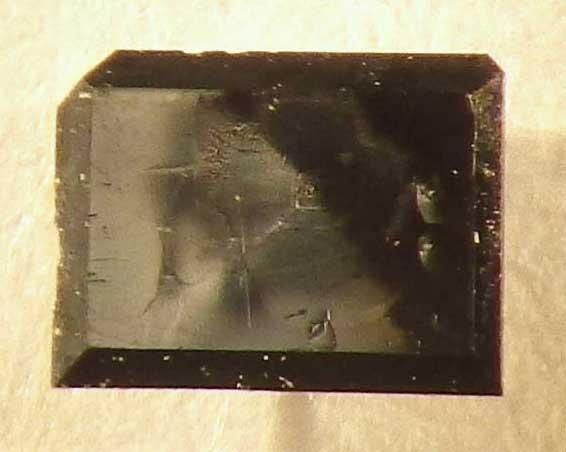Newly Discovered State of Matter Could Be Used for Quantum Computers
| David Perry | | Dec 10, 2014 09:16 AM EST |
(Photo : Gang Li) At ultracold temperatures, a compound of samarium (shown in its everyday state) could lead to a breakthrough in quantum computing.
"In the science business you have concepts that tell you it should be this or that and when it's two things at once, that's a sign you have something interesting to find," says Jim Allen, an emeritus professor of physics at the University of Michigan. "Mysteries are always intriguing to people who do curiosity-driven research."
Like Us on Facebook
He is alluding to the properties of samarium hexaboride, a material that flummoxed science since the 1960s. Known as SmB6 for short, it was recently identified as an exotic state of matter, whose implications are fundamental in the quest to create a viable quantum computer. A revolutionary type of device that could use particles including electrons and whole atoms for processing and memory, a quantum computer would be faster than the most powerful conventional supercomputer, perform more calculations simultaneously, and be more secure.
SmB6 has within its structure a rare form of electron, called a Dirac electron. These electrons seemingly sit on the fence between classical physics (which works for big things such as atoms or galaxies) and quantum physics (which works for very small things, such quarks and other subatomic particles). It was this that piqued Allen's interest.
Dirac electrons interact more with each other than those from an outside source; externally applied electrons race across the surface of SmB6 but are blocked from interacting with the electrons underneath. SmB6 effectively conducts electricity while insulating itself; scientists call substances of this type "correlated materials," and they could drive electrons in a similar fashion to silicon in conventional computers.
"Before this, no one had found Dirac electrons in a strongly correlated material," said Lu Li, assistant professor of physics at the University of Michigan's College of Literature, Science, and the Arts. "We thought strong correlation would hurt them, but now we know it doesn't."
In lieu of the familiar 1s and 0s of binary code used in conventional computing, quantum computers used a "qubit" that can be a 1 or a 0 at the same time. However, because qubits are so small, any sort of measuring system a quantum computer would use to recognize data would force a qubit into a definite 1 or 0, which defeats the purpose of a quantum computer. Because SmB6's Dirac electrons seem to be in two words at once, they could be used with other materials to let a computer measure a qubit indirectly and keep it and its properties intact.
However, because samarium hexaboride has observed correlated properties only at extremely cold temperatures, much too cold for a practical quantum device, Li is circumspect.
"While I don't think this material is the answer," he continues, "now we know that this combination of properties is possible and we can look for other candidates."
The findings, in an article co-authored by Li, was published in the journal Science.
TagsDirac electron, University of Michigan, samarium hexaboride, SmB6, quantum computer
©2015 Chinatopix All rights reserved. Do not reproduce without permission
EDITOR'S PICKS
-

Did the Trump administration just announce plans for a trade war with ‘hostile’ China and Russia?
-

US Senate passes Taiwan travel bill slammed by China
-

As Yan Sihong’s family grieves, here are other Chinese students who went missing abroad. Some have never been found
-

Beijing blasts Western critics who ‘smear China’ with the term sharp power
-

China Envoy Seeks to Defuse Tensions With U.S. as a Trade War Brews
-

Singapore's Deputy PM Provides Bitcoin Vote of Confidence Amid China's Blanket Bans
-

China warns investors over risks in overseas virtual currency trading
-

Chinese government most trustworthy: survey
-

Kashima Antlers On Course For Back-To-Back Titles
MOST POPULAR
LATEST NEWS
Zhou Yongkang: China's Former Security Chief Sentenced to Life in Prison

China's former Chief of the Ministry of Public Security, Zhou Yongkang, has been given a life sentence after he was found guilty of abusing his office, bribery and deliberately ... Full Article
TRENDING STORY

China Pork Prices Expected to Stabilize As The Supplies Recover

Elephone P9000 Smartphone is now on Sale on Amazon India

There's a Big Chance Cliffhangers Won't Still Be Resolved When Grey's Anatomy Season 13 Returns

Supreme Court Ruled on Samsung vs Apple Dispute for Patent Infringement

Microsoft Surface Pro 5 Rumors and Release Date: What is the Latest?










